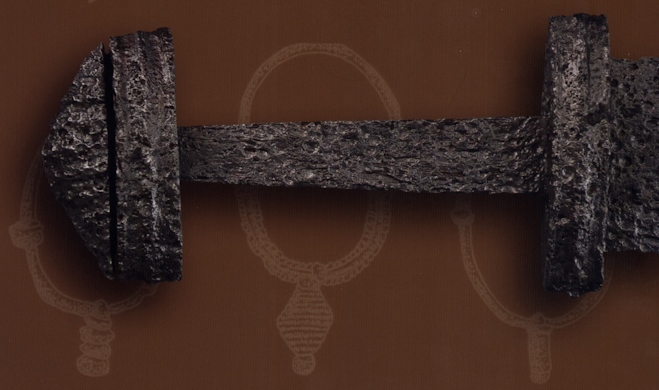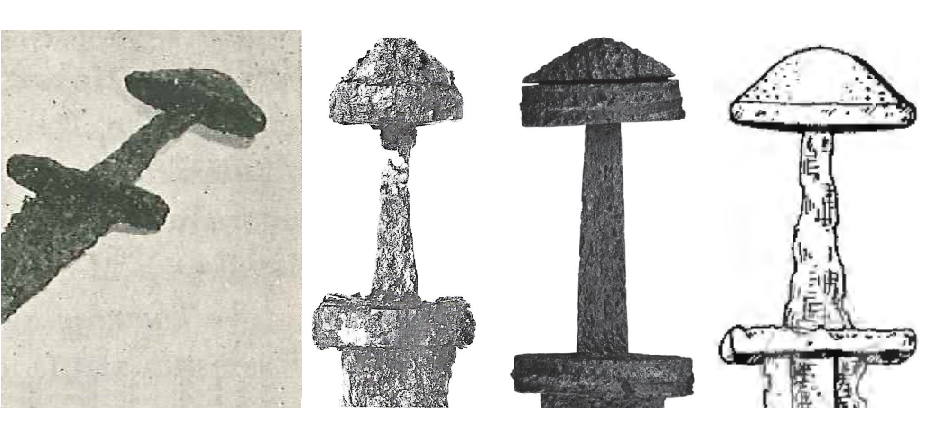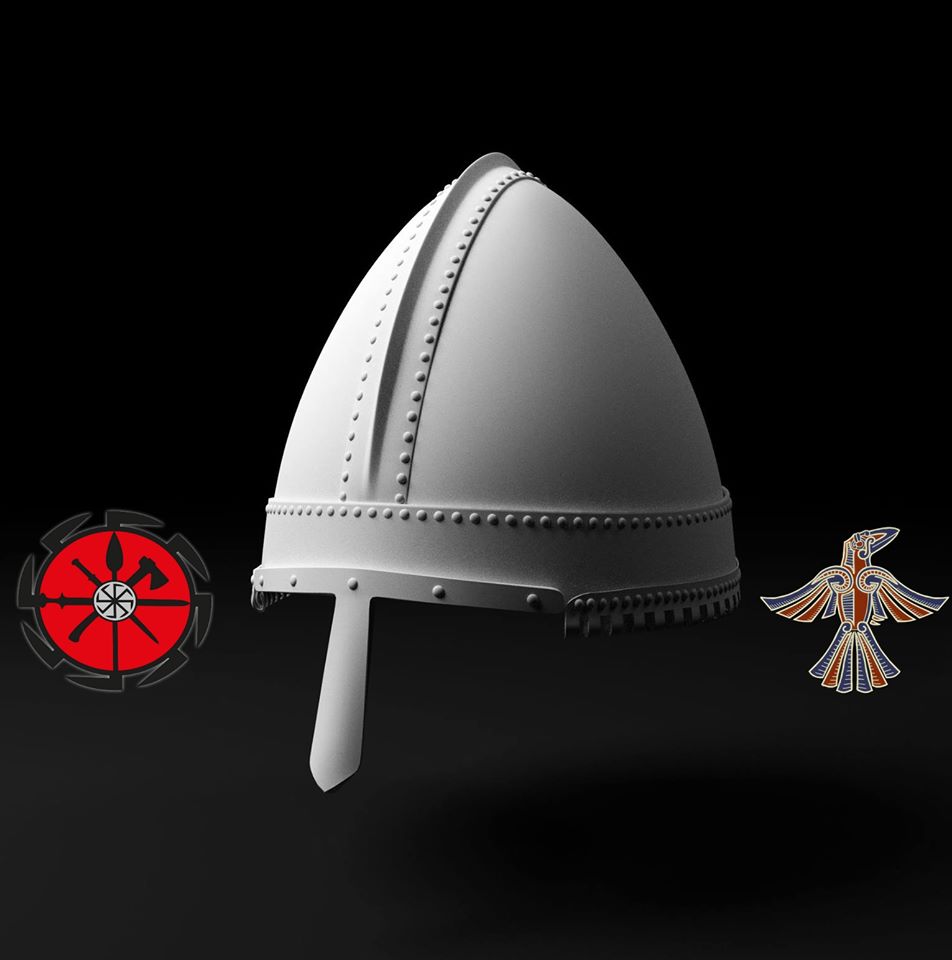
Early medieval forum / Fórum včasného stredoveku (FVS)
1. decembra 2016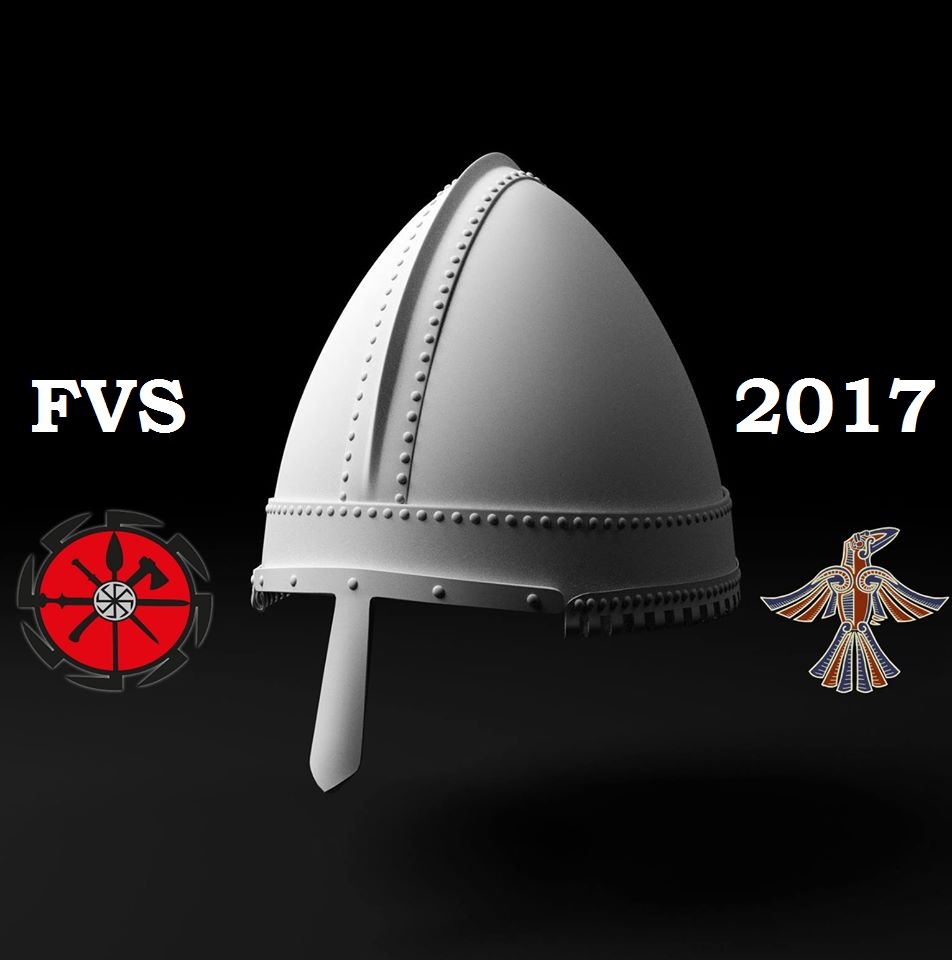
Fórum včasného stredoveku (Early Medieval Forum) – report
8. februára 2017After deciding to aquire a new, historicaly accurate sword for my reenactment activities, I was seeking an appropriate finding best suited for my region and period of interest.
There are several well known sword findings from early medieval age in Slovak and Czech republic. Most of them are highly decorated, without any doubts associated with an individual ranked at the top of the society (ex. sword from Turčianska Blatnica).
However, this kind of sword is not appropriate for me to own and present together with my reenactment equipment. I do not aim to represent a social status of extraordinary wealth as such representation would require me to possess the equipment that would cost a fortune and would necessitate a great responsibility during its reconstruction.

Sword from Turčianska Blatnica, Slovakia. Photo: templ.net
After considering some swords offered by the shops and blacksmiths, I was given a perfect finding to reconstruct. An archeologist from the Archeological museum of Slovak national museum gave me the source materials for a sword that was probably never reconstructed and should perfectly meet my requirements.
The sword was discovered by metal detector and is being stored in a private collection. Fortunately, the employees of the Archeological musem were able to document it. The sword was reportedly discovered in Smolenice in Trnava district in west Slovakia, a small city under Malé Karpaty (Little Carpathians) moutains. Approximately 1 kilometer to the south-west from the finding, on the other side of the valley we can find Molpír hillfort. (Turčan 2011: 129)

Sword from Smolenice. Photo: Turčan, Zborník SNM Archeológia, Supp. 4, 2011
The original finding of the sword was well preserved and partialy marked by corrosion, only the point of the sword was significantly damaged. The sword consists of the pommel made of two parts (upper guard and pommel) , lower guard (crossguard) and a blade. The pommel has a form of a triangle, narrow to the top and it is decorated by 10 vertical ribs with little plasticity. The upper guard is of lenticular form, decorated horizontaly by three ribs. The upper guard is perfored in 3 spots. The central one is for the tang and two holes are dedicated to the rivets joining it with the pommel. The lower guard is decorated similar to the upper guard by 3 stripes of a moderate plasticity. The blade is symmetrical with two edges and thick fuller. The original of the blade was pattern-welded. The total lenght of the sword is 94,1 cm with the blade measuring 79,2 cm and maximum thickness 0,5 cm. (Turčan 2011: 129-131)
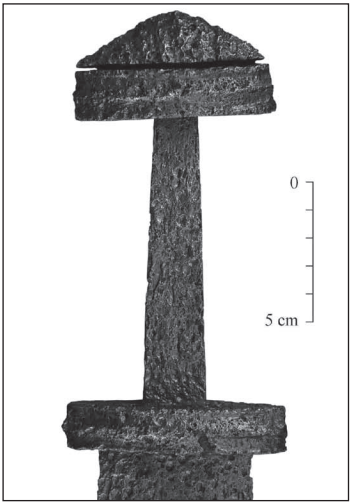
Sword from Smolenice. Photo: Turčan, Zborník SNM Archeológia, Supp. 4, 2011
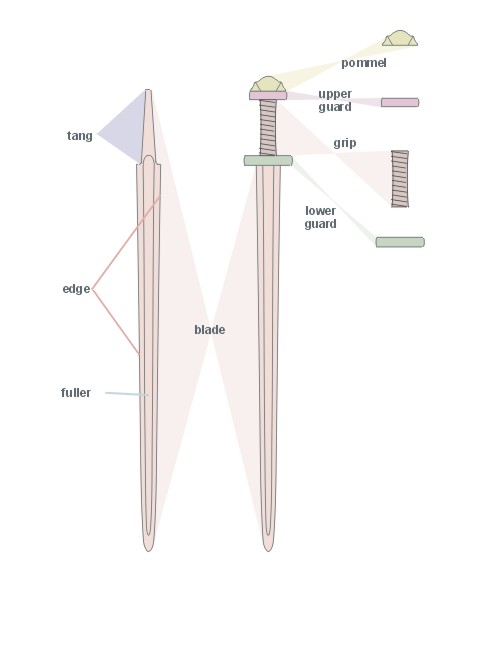
Anatomy of the early medieval sword. Photo: sword-elgur.com
Turčan identifies this sword as Petersen type H , Geibig´s “Kombinationstyp 5, Variant I” and Ruttkay´s type II of the pommel. Turčan also states that it is the fourth exemplar of Petersen type H sword found in Slovakia (other finds: Žabokreky, Skalica, Nitra). In Czech republic, Morava region, there are several findings of this type of sword too. Namely 2 findings from Staré Město, two swords from Pohansko u Břeclavi and one exemplar found in Mikulčice (grave n.265 ). (Turčan 2011: 131) There are two more swords from Mikulčice that are possibly part of the group of Petersen H type (grave n. 580 and grave n. 715). (Košta-Hošek 2014: 153, 159)
Slovak researchers tend to date these type H findings from our region starting at the end of the 8th century to the first half of the 9th century. In the rest of the Europe its appearence is known up to the late 10th century. Petersen sets type H in the turn of the 9th century do the mid-10th century. Kiripichnikov states the possible use of this type of swords in Kievan Rus up to the 11th century. (Turčan 2011: 131-132)

Few examples of Petersen type H swords. Photo: Petersen, De Norske Vikinge sverd, 1919
The sword from Smolenice differs from the average by its unusualy short lower guard of only 8 cm while the finding from Skalica has the lower guard of 8,9 cm and the finding from Gradec kod Drniš 9,8 cm. (Turčan 2011: 131) The sword from the grave n. 265 from Mikulčice posseses the lower guard measuring 10,1 cm. (Košta-Hošek 2014: 77).
On the other hand, the grip of the sword from Smolenice is quite long (10,15 cm) in comparison with the average of the early medieval findings of the swords. (Turčan 2011: 130) The grip of the sword of the same Petersen type from the grave n.265 from Mikulčice is 9,4 cm long. The grips of all the early medieval swords found in Mikulčice are ranging from 8,5 cm to 10,6 cm in lenght. (The newest finding of the sword from Mikulčice is not taken into consideration as it was not published yet.). (Košta-Hošek 2014: 60-237)
The pommel of the sword is not decorated by the common means of decorating by tausia, plating or wires of different non-ferrous metals and its only decoration is plasticity of the iron pommel and both guards. (Turčan 2011: 131-132)
The possible origin of the Petersen type H sword is assumed to be in Rheinland. The swords in the equipment of the early medieval Slavs could be identified as a weaponry or a representation of power of an individual. The question of the origin of the finds from our region is in place as the top quality weaponry could have been imported or alternatively, we can assume a high level of domestic production. (Turčan 2011: 132)

The recontruction of the sword from Smolenice. Photo: Author
As I already stated, my choice for a manufacturer was Luděk Vobořil, a Czech manufacturer with a great portfolio of swords. The replica is of good quality with mostly minor deviations from the original measurements. Unfortunately, due to the error of measuring and understanding the article, the grip of the reconstructed sword was 11,4 cm long which is way too long for an early medieval sword. The manufacturer however shortened the grip to its proper lenght. Besides some small changes from the original form in the area of blade and fuller the manufacturer had to reconstruct the point of the sword with minimal data as the point was damaged and missing. As for the material I had to change the original material in the reconstruction of the blade. The original blade was pattern-welded but this technology would be both expensive and inconvenient for the purpose of reenactment and anticipated blade contact as the replica is made blunt for the same reenactment purpose. This choice together with the need to reconstruct the edge and tip of the sword increased the weight of a sword to 1284 g (from 1192 g of the original finding).
In the future I plan indeed to aquire a proper replica sword with a sharp edge and proper manufacturing technology used. That sword wouldn´t be used for blade contact but only for an authentic representation of history.
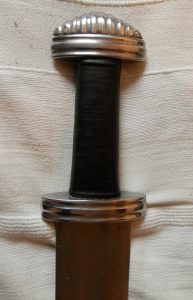
Sword from Smolenice – reconstruction. Photo: Author
Another decision I had to make was one concerning the grip. An adjustment in the lenght of the grip would be a step towards the comfort of handling in possible protective gear but as it would change proportions of the original it would decrease the authenticity of this reconstrucion and the original attrubutes. I chose to keep the measurements as authentic as possible .
The next logical step was to find it a proper scabbard equipped with a dedicated belt separated from my civil belt. At first I thought of manufacturing a scabbard on my own but then I decided to order one from the professional.
The right person to ask was Roman Král from King´s Craft.
He crafted me a scabbard with wooden core, wrapped in linnen and with outer layer made of leather. The scabbard´s suspension is made in accord with the interpretations of Carolingnian scabbards and equipped with metal fittings. The metal mounts are made of iron and corresponding to a find from Dolný Kubín in Slovakia.
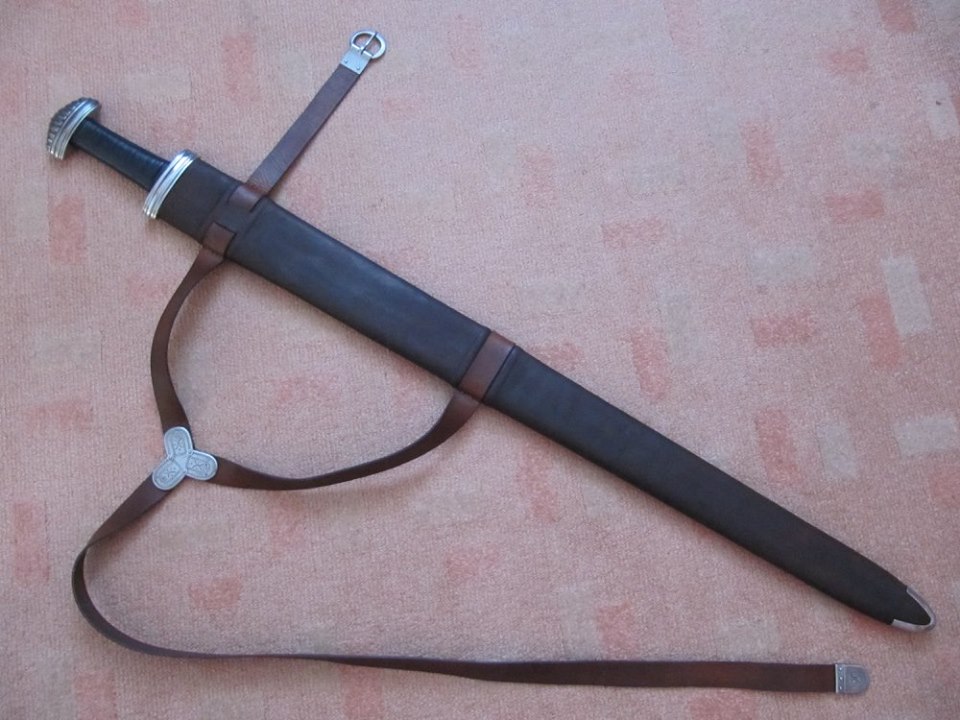
Sword in the scabbard made by Roman Král. Photo: Roman Král

Sword in the scabbard outside the period house in Geschichtspark Bärnau in Germany. Photo: Author
To conclude, despite some minor reservations to this replica of the sword from Smolenice I am quite satisfied with the outcome that is well suited for the period and region I try to reconstruct. The possible setting of the production of this type of swords to the end of the 8th century/beginning of the 9th century is convenient as it is the same period in which my reenactment group is engaged in. I find the question of authenticity very important and as long as there is a possibility to reconstruct the material culture from the conditions we reenact, it should be our first choice.
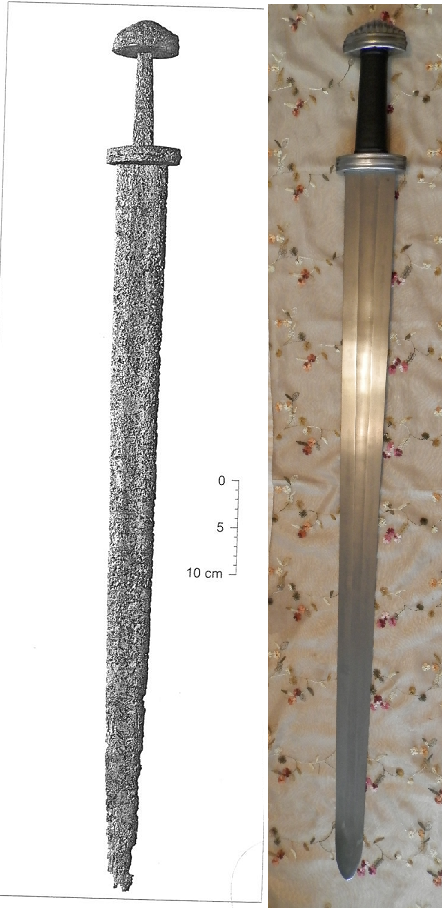
Comparison of the original and the replica of the sword from Smolenice. Photo: Turčan/Author
December 4, 2016
Michal Bazovský
Svjatogor
Sources:
BUDINSKÝ-KRIČKA, V.: Slovanské mohyly v Skalici, 1959
KOŠTA, J. – HOŠEK, J.: Early Medieval Swords From Mikulčice, 2014
PETERSEN, J.: De Norske Vikinge sverd, 1919
TURČAN, V.: Karolínsky meč zo Smoleníc, in.: Zborník SNM Archeológia Supplementum 4, Karolínska kultúra a Slovensko, 2011

